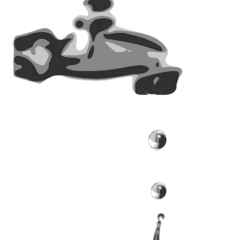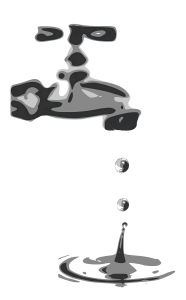dental copywriting
What a Back-Handed Criticism Taught Me About Watching My Language and How It Can Improve Your Dental Website Content
A criticism recently got under my skin. I prefer to roll with push-back but this one irritated me given my experience and expertise.
It involved a discussion about a website’s language, tone, and readability. By the way, each are vital on your dental website and in your dental marketing.
Let’s make one thing clear – I speak English as my first and only (for now) language.
I’ll explain why I’m sharing that bit of trivia in a moment.
My first words as a child were in English.
I’ve sat through boring English classes (no offense teachers or professors) at a high school, university, and post-graduate level. And as a professional copywriter and content marketing strategist I’ve had to unlearn a portion of what I was taught (some rules of grammar DO NOT APPLY).
I’ve learned about “word-economy” (how to say the most with the least amount of words) from some of the world’s best communicators and communication coaching settings.
Plus…
I have over three decades of experience using the English language to persuade, compel, inspire, motivate, celebrate, and comfort.
I have tens of thousands of hours writing and delivering presentations as a public speaker in a variety of venues using (Bingo!) the English language.
And I have close to an equal number of hours as a trained, professional writer/copywriter commanding the English language on behalf of my own and my client’s services.
So when I was questioned by a client (trying to make a point) whether English was my first language, understand why I was ticked. To clarify, the whole issue wasn’t about my alleged “butchering” of the English language.
The issue surrounded the voice, tone, and general design of the language that’s effective on a dental website. Dental practices and dental marketers often hire me to rewrite their content because what’s there lacks all the above – compelling voice, tone, and readable design.
What’s the deal?
The default on many websites (dentistry is no exception) is high word count (that lacks flow or purpose), wordiness (fluff and bloat that doesn’t offer solutions), and feature-heavy (”Hey, look how state-of-the-art equipped and educated we are…” with few if any stated benefits to the reader/site visitor).
Too strong?
Is it too strong a criticism if your readers aren’t compelled to read past your Home page graphics and headline? Or if your copy/content reads like a chapter out of the most recent CE course you took on osseointegration (i.e. it’s full of dental-speak that only dental professionals use and understand).
I’m not implying that your dental website copy or your dental marketing content should be “dumbed-down.” Frankly, that’s an insulting way to describe copy and content that should, above all, compel people to use your services to improve their health.
But for goodness sake make it easy for them to read and know what action to take next!
How to Create and Deliver Dental Content that People Can Understand and are Compelled to Act On
Watch your language.
Language is about being understood. It makes sense that if you need an interpreter or if your reader must Google the definition of a particular word or words used in your content – it’s not connecting!
Your readers connect with you word to word, line to line, and page to page IF they understand what you’re saying.
- Write your dental content for the general public. The education level of your target audience isn’t the benchmark. The benchmark is speaking clearly and compellingly about your services in a way that leads to a specific, intended action like a scheduled appointment, client contract, etc.
- Know your readers. Listen to their pains, concerns, and goals. The late, writer and leadership consultant, Stephen Covey, said it best, “Seek to understand then to be understood.” There is no connection without knowing. Knowledge of your readers leads to understanding what they lay awake at night thinking about, feeling, etc., that compelled them to land on your website or read your content in the first place. Write to that!
Take-that-tone.
Language is about understanding. Tone is about being heard.
Our grandson will ask, “Are you mad at me…?” It surprises me when he asks that because in the moment I’m not “angry” with him at all.
In reality, he’s perceiving my mood by the “tone” he’s hearing in my voice. If I answer a question somewhat “short” or abruptly he hears anger when I’m simply being brief and to the point.
- Write in a conversational tone. Use this tone more than 95% of the time in your dental marketing content. Why? It works because writing how you talk is how you’ll best be heard and get your point across.
- Keep the tone casual, crisp, and to-the-point. Punchy, short sentences compel better than long, rambling, wordy sentences. Remember, with content, being heard starts with being easy to read and follow.
Raise your voice.
This isn’t about volume. Voice is about being relevant.
I’m talking relevance to your audience. Okay, to soothe your occasional need to feel all intellectual and academic – if your audience is other dental professionals or colleagues go ahead and unload all the dental-speak you want.
That’s fine. They get-it.
But…
That’s not your audience on your dental practice website.
- Again, know your audience. Most of the time it’s everyday, ordinary people who have the need to visit your dental web pages because of mouth pain or some other oral health related issue. Period.
- Know how to use your voice. Internal web pages (Home page, About Us page, Services/Procedures pages) are for quick-scanning, easy-to-read, call-to-action content about the basics of your dental services. Your blog/article pages are for more detailed, educational, albeit easy-to-read and informative content that compels them to trust your expertise.
Now, was that so difficult to understand? I’m a bit tongue-in-cheek with that question.
I’m also biased about the language, tone, and voice you use on your dental website and in your dental marketing content.
Keep it real. And whatever you do, keep it readable. Or…your site visitors and readers are gone with a “click.”
That should really get-under-your-skin.
Why “Tasty” Associations are Way Better than “Deadly” Assumptions in Your Dental Website Content
 It was a random, out of season, statement. Especially during the heat of July.
It was a random, out of season, statement. Especially during the heat of July.
There’s a gap between making an association and making an assumption. One can benefit your dental website content. The other can hinder it’s impact.
The key is playing to your strengths. Especially on the benefit side.
Our grandson was thoroughly enjoying some chive and onion cream cheese spread during a family gathering. Scooping a glob of deliciousness onto his cracker he commented, “This dip tastes like Christmas…”
We laughed at his seasonal leap from the summer, mid-year heat to thoughts of cooler temps and holiday gatherings. I found it interesting that, at his young age, he could make such a brilliant taste association.
A matter of taste
You have the benefit of associating certain tastes, smells, sights, and sounds with experiences. Some good and pleasant. Others bad and unpleasant.
You hear a song on the radio and you’re immediately transported to another time and place. The smell of a certain food overtakes you and you’re immediately back at grandma’s dinner table.
Your dental website also comes with a certain set of associations. I’ll deal with some “deadly” assumptions in a moment.
The moment a search lands someone on your site you have an extremely limited amount of time (as in seconds) to form an association for the reader. In fact, you have somewhere between two and five seconds to be exact.
“Guilt” by association or “death” by assumption
If you have a choice, in my professional opinion it’s better to be “guilty” on the association side of your web content than it is die a slow “death” by assumption.
Here’s an example of making an assumption: The more you say about what makes you different or better than another dental practice down the street will lead to more scheduled treatment.
It’s better to lead your website visitors to make an association. For example, your dental website should remind visitors of what they will receive by scheduling or doing business with you. Create website copy/content that answers the question, “So what…?”
“So what…,” you have a new state of the art digital x-ray device – how does it benefit the patient?
“So what…,” your dental practice features a lobby coffee bar, satellite TV on three, 60 inch, HD tv’s, and warm towels in the patient exam rooms – list a deeper benefit for each of those.
Those and many more are excellent (and overly promoted) features associated with many dental practices these days. The key: connect them with stated benefits.
Another assumption: The more words I have on my web pages, the better my search results will be.
It’s common to assume that more is better. That more words makes you more legitimate or search engine friendly.
Not. So. Much.
In fact much or more is not always better.
Try this association: Your readers will better associate with your dental website copy when it’s simply and usefully worded. Remember “fluff” and “bloated” page content bores and prompts a click away from the page.
Create website copy that’s readable, “You”-focused, easy to navigate with benefit oriented bullet points, and plenty of eye-appealing white space.
And yet another assumption: Your website will create all the response you need if it’s full of eye-candy graphics, images of smiling, “beautiful” people, and a trendy looking design.
Compare dental websites in your area or community. Make note of the stock images you find that are used on your site and/or a number of others.
This creates a deja-vu feeling – “I’ve been here before…next!”
And with a click they’re gone. Translation: new patient, next treatment, production…lost!
Association: Your site visitors will respond when you compel them to. Website visitors respond when they’re told what to do next.
And that next step is easier because you have a clear call-to-action. Create compelling, call-to-action copy and links on every web page.
Answer the question clearly: “Where do I go/click next…?” Use action words like, “schedule,” “call us…,” “contact…”
On your dental website one paragraph of copy/content should naturally and compellingly lead to another. Design useful, informative, benefit-focused, action-friendly web pages throughout your site.
Make no “deadly” assumptions. Instead, create new, fresh associations.
You’ll create site visitors who say, “This reads (”tastes”) like a dental provider I could schedule with.”
And isn’t that why you have a website in the first place?
How to Add Some “Suspense” to Your Dental Marketing Content and Increase Your Influence
 Out of the corner of my eye, all I saw was a dark flash outside my studio window. And then a few tufts of feathers floating upward in the breeze.
Out of the corner of my eye, all I saw was a dark flash outside my studio window. And then a few tufts of feathers floating upward in the breeze.
The suspense hung in the air as I searched for the cause of all the commotion.
It’s easy to miss the point of why you create content for your dental marketing. And the bigger issue might be what’s really missing.
As far as I could tell the bird never saw it coming. The “it,” was apparently the small white cat with said bird in its mouth (Poor, lil’ thing…the bird that is).
The plot unfolding outside my studio window was thick. Suspense works that way.
What’s the point of your dental marketing content? Even more revealing – what’s the plot?
A random flash of dental speak here and there isn’t a plot.
Why?
People expect that. So, let’s talk expectations for a moment.
Web searches turn up hundreds, even thousands, of results for dental services. Depending on the size of your locale those search results can be even higher.
I write a lot of dental website content for clients. And my curiosity remains high about how effective it really is when all’s-said-and-done.
Potential dental patients, new patients, or those seeking your dental services, etc., arrive at on your website for one reason.
Something worked in their search query.
Keyword rich copy is essential. But…
I’m realizing there must be more to keep them ON your website. And more important – returning again and again.
Don’t cop out saying – “Well, they scheduled…or hired us…so my website must have done it’s job.”
Sure, a scheduled appointment adds to your dental digital marketing win-column. I’ll give you that.
What is of equal importance is the relationship you’ve only begun to develop with that new patient or client.
Is the suspense (or lack of it) “killing” you?
Who is helped by typical, outdated, status-quo, overly technical, feature-heavy, dental web content? And why is that a necessary question?
Imagine someone arriving on you dental website and experiencing something entirely fresh, out-of-the-box. What would that look like?
Glad you asked!
The new brand of dental web copy that adds a little suspense, keeps them returning for more, and sharing what they found so your dental practice or dental industry business achieves greater influence.
That’s a lot to comprehend. Allow me to break it down.
Your new brand of dental website copy or digital marketing content isn’t about your services.
“But I’m in the business of providing dental services,” you say. Correct! You are.
Yet, that’s not the only reason why people do business with YOU!
Remember those thousands of web search results?
You are hopefully among them. And the only reason you or another local practice or business showed up where you did in the rankings has everything to do with this.
One, you paid for your ranking with ads or any of the common, trendy approaches that work but also devour time and cash flow.
Or…
Two, you’re nowhere near the top of the search pile because you didn’t invest in the latest, trendy SEO technique.
Or…
Three (and here’s something to think about and repeat lavishly), you achieved a higher ranking than most because you know the value of a content-rich website that consistently provides useful, relevant content for those searching for your services.
It’s not only what you do or provide. It’s also about showing up consistently with information that showcases your authority or expertise.
- Launch or re-launch your dental blog or dental articles page. It’s the most cost-effective and long-term beneficial strategy to maximize all that dental-speak that you think can only be posted on your services pages.
- Use your blog to communicate the information potential patients or clients are searching for about solutions for their dental health or dental business.
Your new brand of dental website copy isn’t really about YOU.
“But I’m the founder, the dentist.” Right. You are!
And everyone expects you to talk about you.
How about your About Us page? You know, that page where you talk about qualifications, educational achievements, CE credits, and on and on.
There has to be more.
- Tell readers less about your qualifications and more about what it’s like to do “business” with you. For example, what does an appointment look like from start to finish? What’s your personal treatment philosophy? How does a consultation move step by step? And what are the outcomes people can expect?
- Invest your dental marketing copy in those descriptive processes that build the “suspense” about what it’s like to work with you and your team. The return on that investment has the potential to be greater than a quick glance and…”Oh, sounds like every other dentist or dental service provider in my search results.”
Suspense can transform your dental marketing efforts. Use a bit of it to increase your value in the eyes of those searching for precisely what you provide.











